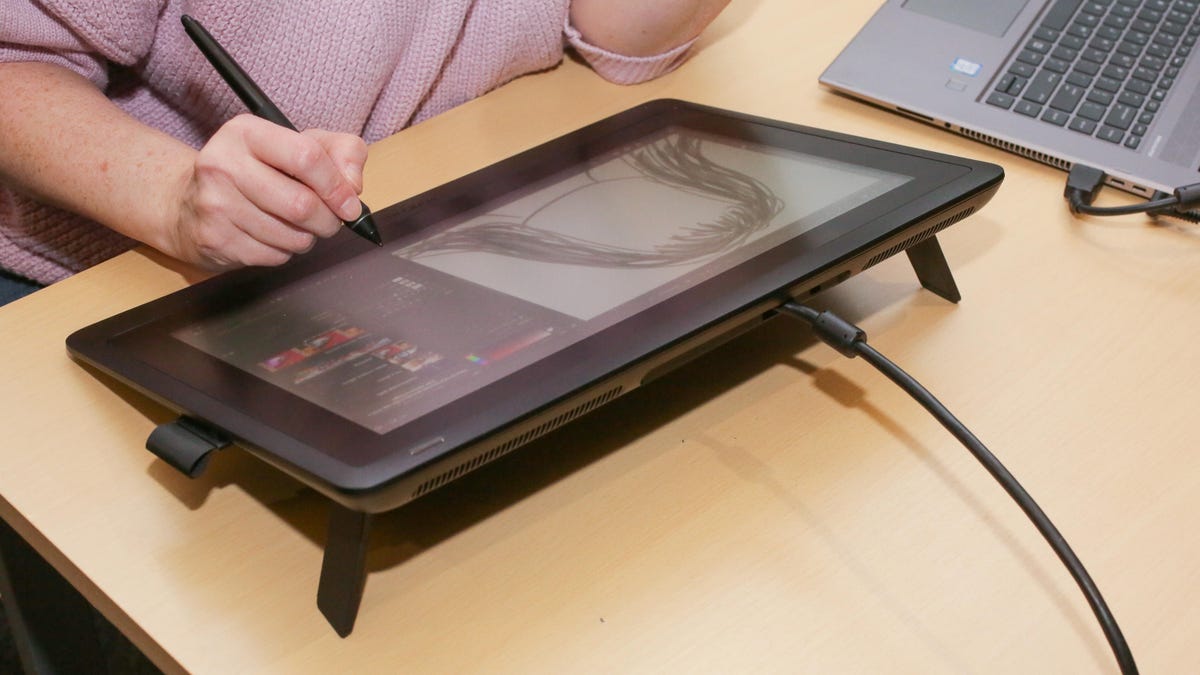Wacom's entry Cintiq 16 pen display is priced for artists on a budget
We've been using the $650, stripped-down entry-level model launched at CES 2019 and think it may be exactly what some of you've been waiting for.

If you've been yearning for a Wacom Cintiq Pro but can't bear the high prices, the company's new entry-level Cintiq 16 may offer a more wallet-friendly option. Cintiqs are the line of pressure-sensitive pen displays that provide a mobile tablet-like experience for drawing but connect to a standalone computer; the Pro models start at $800 for a tiny 13-inch model, then jump to $1,500 for the 16-inch model and beyond. At $650, the Cintiq 16 isn't cheap, but for amateur and budget-strapped professional creatives, it may be the on-ramp you've been waiting for.
Whether the differences between the Cintiq 16 and its $1,500 brother Cintiq Pro 16 are worth the double the bucks depends on how important aspects ot the display are for you as well as how sensitive you are to parallax (the offset of the pen tip).
On one hand, the most important part of the tablet -- the 8,192-level pressure sensitivity support and the ability to use the standard styluses and software -- is the same, as is the essential drawing experience, and comparable to the screen-free Intuos Pro. So as a training-wheels-for-artists or a budget option until you can afford the higher-end model, it's not a bad deal.
But the display/tablet surface is different than the Pro, which may possibly result in slightly worse parallax, though I really didn't perceive any. In part, I think it's less perceptible because of the 1,920 x 1,080 HD screen compared to the pricier model's 4K; I suspect there's a lot more latitude with the cheaper tablet's lower pixel density.
The Pro model also supports touch, which can be a mixed bag. On one hand, I habitually found myself trying to use the Cintiq 16 as a touch screen. On the other, it was really nice to not have to worry about palm rejection problems.
More noticeably, the screen is fairly dim, testing out with a peak brightness of only 215 nits (250 nits is typical for a cheap monitor) and the matte screen looks really soft and low contrast, which isn't great for detailed work. It also has a relatively small color gamut, measured at about 95 percent sRGB and meh accuracy. The pro model's gamut hits 94 percent Adobe RGB.
The 3-into-1 cable is at least two too many.
The tablet's design can be cumbersome as well. It uses an old-fashioned hydra cable with three heads -- HDMI , a USB-A connector and and power connector , to which you attach an AC adapter , which in turn attaches to a standard power cable -- which doesn't mesh with modern laptops .
For example, a lot of them only offer USB-C connections these days, which means you'd need a USB-C to HDMI adapter or hub as well, and you never know if the adapter will affect the performance. Even if you do have the requisite ports, they're often on different sides of the system, as was the case with the HP ZBook Studio I hooked it up to at one point.
It also has the side loop to hold the Pro Pen 2; those loops tend to be awkward to use since the rubberized grip of the pen keeps it from sliding easily in or out of it (of course, that's what keeps it from easily falling out as well).
The optional stand provides sturdy support.
Out of the box it has no stand, just two flip-out legs which lift it to a 19 degree angle (or almost flat without them). You'll probably want the optional stand, which not only lets you ratchet to a larger selection of angles, but lets you stand the Cintiq up to use it as a secondary display or to reduce its footprint when you're not using it as a tablet.
Unfortunately, you have to screw the stand on, which means you can't use it only occasionally -- it's heavy and bulky, so you can't easily tote the Cintiq somewhere for an afternoon, say.
You also have to pick an orientation, portrait or landscape, when you attach it, and because of the angle it's not comfortable to use in anything but the preselected orientation. It would be great if it snapped or latched on and could rotate to any orientation. But otherwise it's not hard to assemble and is quite sturdy and easy to angle.
CES 2019: See all of CNET's coverage of the year's biggest tech show.
CES schedule: It's six days of jam-packed events. Here's what to expect.

